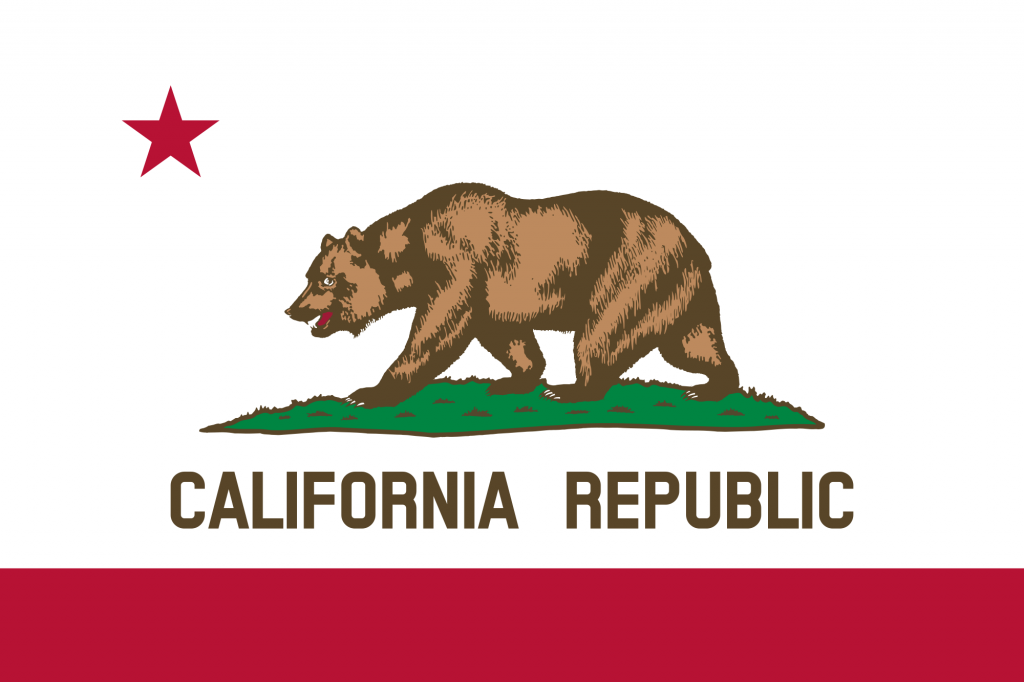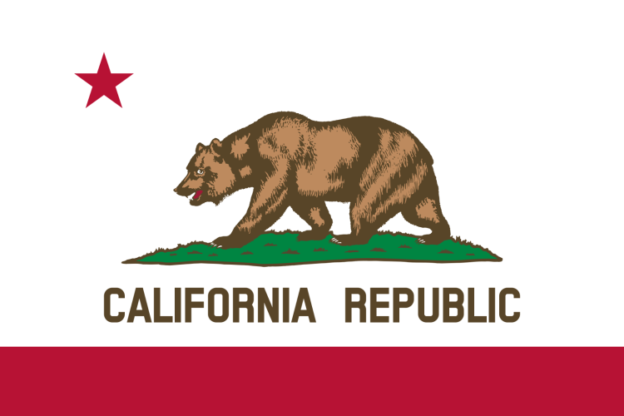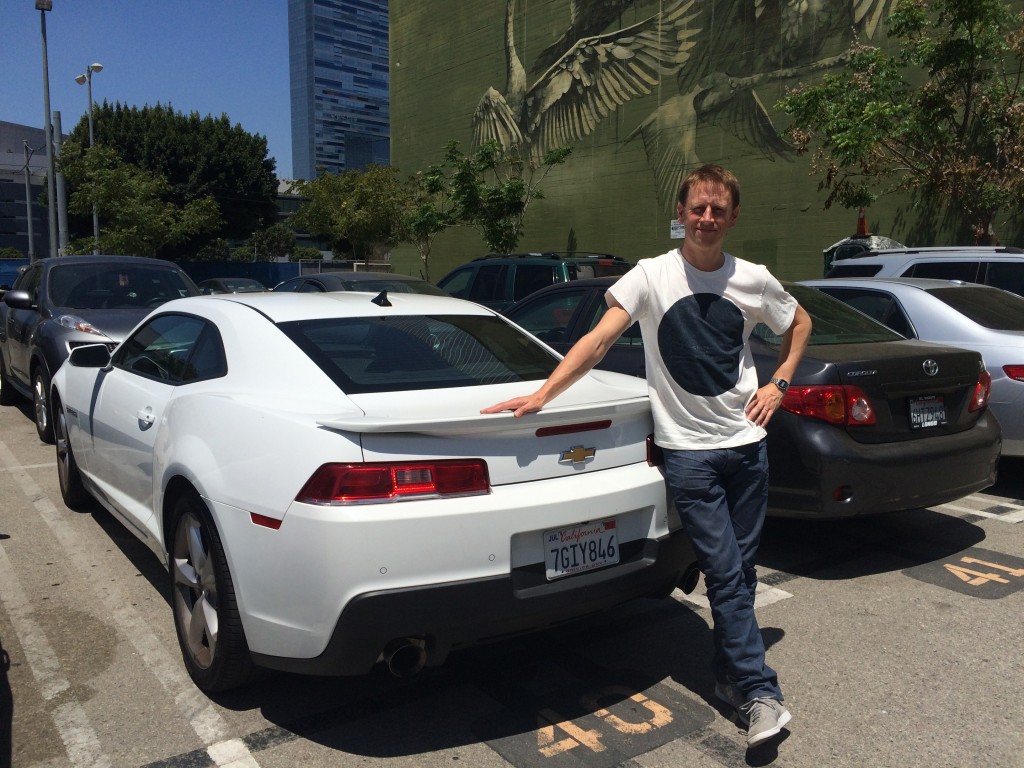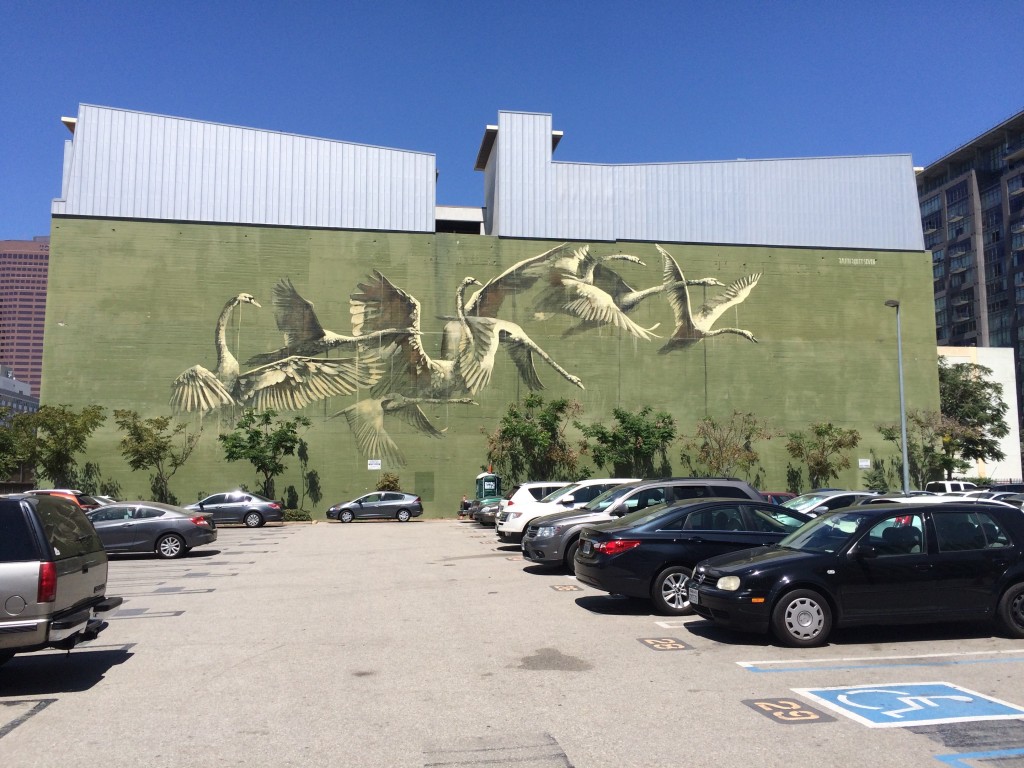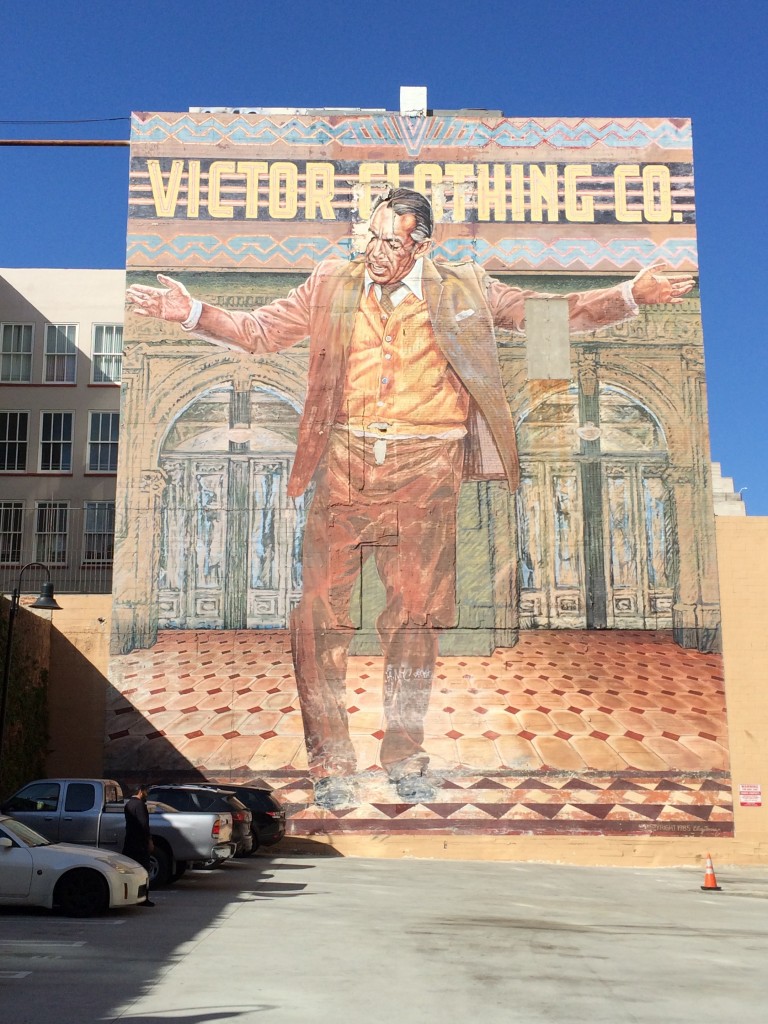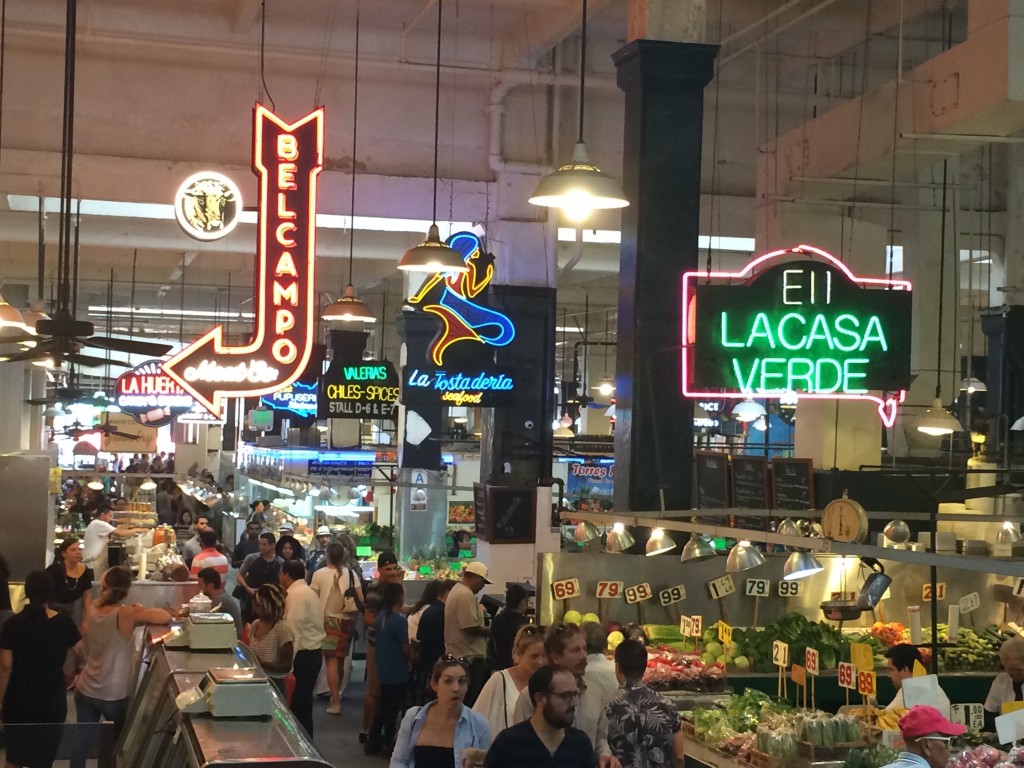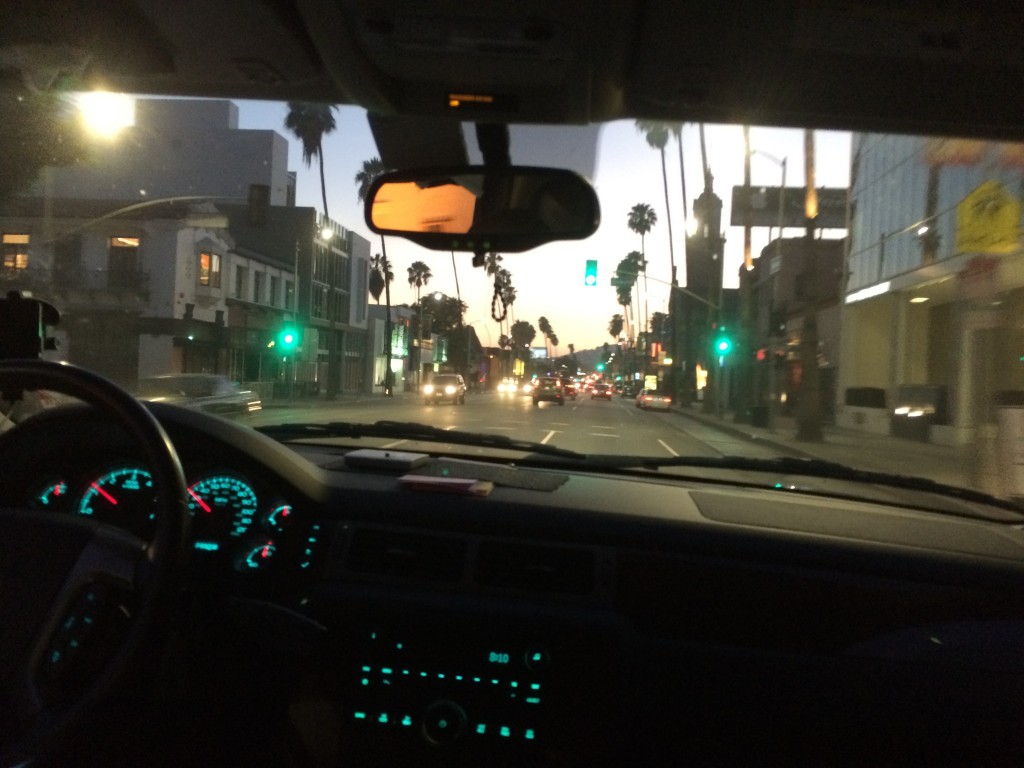Here’s the next part of my description of my recent trip around California. This is a description of my honeymoon, but I’m also going to tell you about the cultural, geographical and historical context of the places we went to, and I’ll give you some practical tips and teach you some British and American English too. This is part 2 of the California series. Let’s carry on.
[DOWNLOAD]
In part 1 I told you about the itinerary for our trip, some of our first impressions of arriving in L.A., some notes and advice on customer service and dealing with waiters & staff, some stuff about the car, an audiobook recommendation and California’s marijuana laws. So, let’s carry on in this episode. First of all, I’d like to give you a brief history of California, because it helps to understand what the place is all about when you learn about its history.
A Very Brief History of California Source: http://michaellamarr.com/cahistory.html A paraphrased and reduced version.
California is known as the golden state, because of the sunshine but also because of the gold that was found there in the mid 19th Century. But let’s go further back to consider the first people to have populated California, a long long time ago (but not in a galaxy far far away this time).
![]() People arrived in California about 12,000 years ago. They were descendents of the people who travelled across the Bering Strait from the Asian continent about 40,000 years ago. They travelled into North America to follow food – migrating herds of animals probably. At that time it seems that Alaska and what is now Russia were connected by an exposed stretch of land which later was covered over when the sea level rose, separating America and Russia (or the Asian continent). Those people became the first Native Americans. They eventually found their way to the area we now call California. They lived there in various tribes in different parts of the state, undisturbed for a long time.
People arrived in California about 12,000 years ago. They were descendents of the people who travelled across the Bering Strait from the Asian continent about 40,000 years ago. They travelled into North America to follow food – migrating herds of animals probably. At that time it seems that Alaska and what is now Russia were connected by an exposed stretch of land which later was covered over when the sea level rose, separating America and Russia (or the Asian continent). Those people became the first Native Americans. They eventually found their way to the area we now call California. They lived there in various tribes in different parts of the state, undisturbed for a long time.
Then, in the 15th and 16th centuries, Europeans began travelling across the Atlantic and America was ‘discovered’. It was the Spanish, with Hernando Cortez initially, and then other explorers who were the first Europeans to enter the area that we now know as California after fighting the Aztecs and developing a Spanish colony in Mexico. The Spanish attempted to settle in California and find a route they could use to sail their ships from the Atlantic coast to the Pacific coast, but they the failed to find one after lots of attempts, with some competition from Sir Francis Drake who to the English is a great explorer, but to the Spanish is a pirate who raided early Spanish settlements, stealing lots of their silver. The Spanish found it hard to settle in California because of the difficult access from the Atlantic side and because of clashes with the native people so they ignored California for about 150 years, although they had named the areas of America that they’d ‘discovered’ and claimed “New Spain”.
It’s not entirely clear how California got it’s name but it seems that the most popular theory is that it comes from a romantic adventure story by Garcia Ordonez de Montalvo called “Sergas de Esplandian” or “The Adventures of Esplandián” (1510). This story tells of a mythical island called California, which is populated by a race of beautiful and powerful Amazonian warrior women called the Califia who are ruled by the formidable Queen Califia. In the story, which was a very popular and well known one, the Califia were warrior women “of vigorous bodies and strong and ardent hearts and of great strength.” The queen and her warriors would go on adventurous missions, fly around on griffins (griffins are legendary creatures with the body, tail, and back legs of a lion; the head and wings of an eagle; and an eagle’s talons as its front feet) that lived on the island and would capture and kill men they come upon during their travels. Any man found in their domain they would eat. Califia or California in the story is presented as a mythical place near the real world. The island is described as a kind of paradise filled with gold and precious stones.
The original Spanish settlers who came to the area first thought that California was an island, and perhaps it was similar enough to the mythical island in this story that the settlers were inspired to use that name. The story was well known and popular enough, and some believed it was based on an older myth which was part of an oral Spanish tradition. Some people may have believed it was true and this place really existed. Maybe they thought they’d arrived there for real, or maybe they were just inspired by a good story. It’s not entirely clear, but what we do know is that, essentially, California is named after a beautiful and powerful Amazonian warrior queen, who used to fly around on a griffin and eat men for breakfast. Pretty crazy, right? It sounds like something from an Arnold Schwarzenegger film from the 80s or something. It just shows that California has had a fairly long tradition of grand, glamorous and sexy myth making and story telling associated with it.
In 1765 a man named Jose de Galvez, who was an official to the Spanish king decided it was a good idea to have another go at claiming New Spain properly, before the English or the Russians did it. He managed to convince the King to let him go on a mission there, with the intention of claiming the land and spreading the Romain Catholic faith. Although it was a very difficult mission with lots of hardship, ultimately it was successful and several missions (Christian bases) were set up on the Californian coast, including Monterey Bay and San Francisco. The Spanish missionaries managed to convert a number of the local natives into Catholicism, but this was largely due to the threat of violence or because they pacified the natives with offerings of supplies and tools that they’d never seen before, although saying that I’m sure the natives were also genuinely impressed by these new people who had arrived and may have seen them as being sent by god. Again, things didn’t go completely smoothly because there was resistance from the locals who did fight back, but in the end the Spanish were numerous enough and powerful enough to withstand these resistance movements from the Native Americans, even though unfortunately this meant that a lot of native people were killed and severely punished in the process. This is all part of the story of how the Native Americans were eventually almost completely wiped out in the long population of America by Europeans.
The Spanish settlers and missionaries built forts at strategic locations up the California coast. These were basically protected bases which helped them defend their territory against angry natives or possible invasion by other countries wanting to take this beautiful and rich land that they had managed to claim. To provide food for the people in these missions or forts, pueblos were created around them. These were basically towns with farms that could produce food. These places eventually grew and developed to become cities like Los Angeles, Monterey and San Francisco.
Then there was a war of independence in 1810 which ended in 1821. This is a similar story to the war of independence against the British which was fought on the other side of the country. The colonies in New Spain were fed up with the way they were being ruled from Spain and felt they didn’t have enough freedom or independence. The people of New Spain won that war and set themselves up as an independent government under the name of Mexico. The Mexican government took control of New Spain and decided that the missions had too much power, and closed them, freeing up the land previously owned by the missions. The priests in the missions were still allowed to operate churches there, but the land was to be divided between Mexican settlers and the Native Americans. The thing is though, the Native Americans had no real understanding of the concept of land ownership so they either didn’t want the land, didn’t understand that it could be given to them, or didn’t know how to deal with it because they’d been living in the missions so long that they were now dependent on the Spanish and Mexican settlers who ran the place. Some native Americans managed to return to their way of life, and some tribes of natives in California had managed to avoid being captured by the missions so there were still Native Americans in California at the time, but the coastal colonies continued under Mexican control. The Mexicans in California did lots of trade with people from many other places during this period, which enriched the area with the influence of different cultures. Presumably these traders came from Russia, Asia or Europe.
Some people, mainly fur trappers, managed to make the very difficult journey from the East coast by land. Remember that it took me 6 hours to fly from New York to LA? Well in the early 19th century it would have taken years to make the journey and in the beginning only the toughest and wildest people could make the journey, which was essentially a massive exploration into unknown wilderness populated by native tribes and dangerous wildlife like grizzly bears. But, some fur trappers made it to California in the first half of the 19th century. These fur trappers were really tough explorers who travelled west in search of valuable fur pelts – basically the skin and fur of different animals. Beaver was perhaps the most sought after pelt. Why? Because beaver fur was used to make top hats in Europe. You know those tall hats the Victorians used to wear? They were made from beaver fur. It’s light, strong, glossy and warm. Perfect material for a good hat, so there was plenty of demand for beaver fur as well as other animals. The first fur trappers must have been very tough guys who were almost as wild as the natives they met along the way. In fact many trappers got to know the natives and learned a lot of their knowledge to help them survive in the American wilderness. Imagine the challenge of crossing rivers, mountain ranges, deserts, canyons and forests. We’re talking about epic journeys.
By the mid 1800s the independent Nation of the USA was very keen to extend its territory to the west, in order to populate and claim that whole stretch of North America from east to west. In fact the prevailing ideology of the time was a strong feeling that the United States had almost a god given right to claim the land, and that it was the destiny of the USA to do so. This is the idea of manifest destiny – That the USA felt the land was theirs for the taking and that they had the god given right to take it. James Polk was the president at this time and he decided that he wanted to take the lands of Texas, New Mexico and California. Texas was a country in its own right at the time after having broken away from Mexico, and New Mexico and California were still owned by Mexico.
By this time – about 1840. More and more settlers had followed the fur trappers west and had settled in California. This included a man called John C Fremont who was an officer in the US army. He led a brigade of 60 men into California and met Colonel Jose Castro of the Mexican army in Monterey. Castro (no relation to the Cuban leader who came much later, I think) sent the US soldiers out of California, but this army brigade were determined and later re-entered California, gained the support of some of the settlers there and started a revolt in Sonoma, flying the flag with a star and a grizzly bear – the flag of California, and they pronounced it “The California Republic”. This coincided with the general aggressive movement into Texas and New Mexico by President Polk’s US army. Fighting between the USA and Texas had started along the Rio Grande river and this fighting eventually reached California. The bear flag rebels joined the US army during this war and fighting continued into 1848 when when the Treaty of Guadalupe Hidalgo was signed, ending the war. The treaty brought peace to California and also stated that Mexico had to give more than 525,000 square miles of land to the USA. This included the areas between Texas and California, and marked the extension of the USA’s territory from east to west coast.
What happened next was that gold was discovered in California and this changed everything. The first discovery of gold was in 1848 in the Sacramento valley, which is between San Francisco and the Sierra Nevada Mountains, and that caused a few hundred local Californians to move there, and a thousand or so outsiders. A lot of them struck gold and became very rich. Word of this travelled quite far, and fairly quickly. By early 1849 many people around the world had heard the news about gold being discovered in the new world in California and instantly thousands of people were infected with gold fever. “There’s gold in them there hills!”
1849 was the big year for the California gold rush. Something like 100,000 people travelled to California in that year. The people who travelled there are known as the 49ers (which explains the name of the American Football team from San Francisco). About 60% of the 49ers were from America, but the rest came from other countries all around the world and many of them settled in California long term, again adding to the diverse culture of the place. The Chinese certainly moved there in large numbers. Something like 20,000 in total, and many of them settled in the nearest port – San Francisco, which is why there is a large Chinese community there in Chinatown today. 100,000 people is a massive influx in just one year, and the gold rush is certainly one of the most significant moments in American history. By the end of 1849, the non-native population of the California territory was some 100,000 (compared with the pre-1848 figure of less than 1,000). A total of $2 billion worth of precious metal was extracted from the area during the Gold Rush, which peaked in 1852. The non-native population grew by about 1000% in about 18 months following the discovery of gold. This represented a massive injection of culture, development and wealth into California. San Francisco for example, quite quickly became a large metropolis.
What about the native Americans? It wasn’t a good time for them. Essentially, The USA’s expansion west, particularly in search of gold and land just didn’t fit in with the way of the life of the natives. The two cultures just couldn’t live together, and because the American settlers were more numerous, had better technology and weapons, and because the Native Americans were vulnerable to diseases carried by the settlers, the natives just couldn’t hold on to their way of life and were either killed or forced to live in limited areas known as reservations. It’s sad, because the Natives were people who had learned to live in harmony with their environment, and then they basically got wiped out or forced off their land, and treated like animals. It’s heartbreaking really.
By about 1852 even though the surface gold had basically disappeared, lots of people continued to make the journey west in search of their fortune and a better life, and they continued to make that journey for decades as California continued to be seen as a place where people could have a better quality of life.
The 1930s saw another fairly big movement of people into California in search of a better life as a result of the great depression and the dust bowl across the midwest. The dust bowl was basically a huge drought in the early 30s in large farming states from Texas to South Dakota – a big stretch all the way up the middle of the country. There was a huge drought (no water) and so all the crops failed and the earth turned to dust. Within a couple of years there were huge storms that carried the dust into the sky and far along the ground. This made it almost impossible for families to live and grow crops so many of them just left the area and made the arduous journey west towards California in search of a better situation.
Another Audiobook Suggestion
“The Grapes of Wrath” by John Steinbeck
John Steinbeck lived in Monterey, so I thought I’d pick one of his books, and I think this one is probably his most celebrated work. It has a rating of 4.5 out of 5 on audible, which is really high, and the book is widely considered a great classic of American literature. Written in 1939 after the great depression of the 1930s the book follows the story of a family from Oklahoma who are forced to make a long journey across America to live in California. It tells their personal story of the difficulty of the journey, but in doing so it manages to capture the epic narrative of a whole migration of people into the American west. Steinbeck creates a drama that is intensely human yet majestic in its scale and moral vision, tragic but ultimately stirring in its insistence on human dignity. Here’s a quote from a listener’s review: “From start to finish each one of the characters, because they were so well formed and realistic, evoked empathy but never to the point of pity. Every character bore their share of hardship. You walk away from this experience feeling stronger for having been in their company. These were people to be admired.” R. Solomon from New Hampshire.
www.audibletrial.com/teacherluke The Grapes of Wrath by John Steinbeck. Pick the version read by Dylan Baker. It’s unabridged.
A Brief(ish) History of California (continued)
The gold rush was a really important time for America, and the great depression of the 1930s. The migration into the west which was involved in both situations, and to a larger scale across the whole previous century of American history at that point was the embodiment of the American dream. The idea that anyone was free to start from the bottom and if they had the strength and courage they could make their own fortune by driving west, claiming their own plot of land, and delving into the rich American soil to produce shiny gold and riches, or an escape from hardship into liberty! These days people still go west in search for a fortune or some sort of everlasting freedom, but not because of gold, but in search of stardom on the silver screen. Los Angeles and the Hollywood star machine continue to be an attractive goal for many people, although it’s nowhere near the same scale as the original gold rush.
Nevertheless, California maintains its image as the golden state and is still considered to be a golden land where fame and riches can be found. Generations of immigrants have been attracted by the California Dream. California farmers, oil drillers, movie makers, airplane builders, and “dot-com” entrepreneurs like Steve Jobs, Bill Gates and Mark Zuckerberg have each had their boom times in the decades after the Gold Rush. California is also a very popular destination for tourists, holidaymakers and honeymooners, and dreamers. It’s still associated with the American Dream and all that it offers.
But that vision of America may eventually have its downside when you’ve basically made it across the country, you’ve made it to the golden land, the gold has run out and yet the dreams remain. What seems to happen is that people lose it a a little bit, or feel that their idealism and perhaps naivety are challenged by the final frontier – the frontier of inner space or spirituality or just general meaning to life. That may be why people are pretty ‘far out’ here – there’s lots of spiritualism, yoga, new age thinking and so on. Perhaps that’s why they’re into movie making too. It’s the dream factory. Also, there’s plenty of entrepreneurialism in business technology, especially into another frontier – cyberspace, as I mentioned earlier with Facebook and other software and social networking companies. In fact here’s a list of companies in the bay area of San Francisco: Facebook, Pinterest, Tesla, Hewlett Packard, Quora, TuneIn Radio, Google, Skype, PayPal, Logitech, LinkedIn, Groupon, Uber, Android, Intel, Apple, EBay, AOL, Yahoo.
LA Continued…
We drove downtown to have a look around, get some food, get used to the place, take it easy a bit, do some shopping.
Driving in the car in traffic.
One thing we noticed was the huge paintings and murals on the walls. There’s some really fantastic and very large artwork on the sides of buildings. It’s more sophisticated than graffiti. It’s really excellent. Check out this link to see some of the murals http://www.laweekly.com/arts/10-best-la-street-art-murals-of-2014-5279399
In fact there are murals in many places in California, especially the cities like LA and SF.
Downtown market
Grammy Museum – amazing music exhibition, particularly the interactive screens which allowed you to take a journey though all the interconnected musical genres.
Huge Taylor Swift exhibition, probably because she was due to perform a number of concerts nearby. In fact, Taylor Swift followed us around California. Wherever we arrived she seemed to be doing a concert and we kept hearing her hit song “Shake It Off” all the time, including in the museum shop where it appeared to be playing on a loop, all day. I can’t imagine what that did to the brains of the staff working there. I quite like the song actually. I think it’s a great pop song – and is commercial, super catchy and full of hooks and so on. I’m not sure about Taylor Swift herself. She started out as a country artist, and then recently she sort of switched over into R&B a little bit and it’s worked out for her. I don’t really like any of her other songs, but Shake It Off is just a perfect little pop song.
Hollywood Improv. for comedy + food.
Fighting jet lag.
Back to the hotel to watch a bit of American TV and then pass out.
American TV – just commercial break after commercial break, and many of them are about treatments for health conditions. So many adverts for health insurance and medical solutions. It’s really weird. It’s hard to actually find any content on TV because it feels like about 50% adverts. You flick through the channels and it’s just ad after ad after ad. Still, some of the late night comedy and chat shows are pretty good. FOX News is a total joke. CNN doesn’t seem that much better to be honest. It’s all way too glamorous and just doesn’t feel objective or incisive enough.
There’s a presidential campaign going on. Donald Trump is dominating the news. He’s basically a right-wing free market capitalist who says whatever the hell he likes and appears to be running for president purely because his ego is in overdrive. His skin is more orange than the sun, his hair looks like it should be captured and studied by scientists, and his views on immigration are pretty disgusting. For example, he recently said that Mexican immigrants are rapists and thieves and that if he was president he would start by building a huge wall between the USA and Mexico, and that the Mexican government will have to pay for it. Right. Is this the man we want to be in charge of one of the biggest and most potentially lethal countries in the world. No. Please no. Hilary Clinton will probably win, but I wonder about her connections to all those corporations. Bernie Sanders is a pretty reasonable left-wing candidate. The other Republicans don’t seem to be any different to each other. Jeb Bush is, well, he’s another Bush! But even he seems pretty normal compared to Trump. American politics is fascinating, entertaining and also a little grotesque and a bit scary. What a country.
End of Part 2. Part 3 coming soon…
